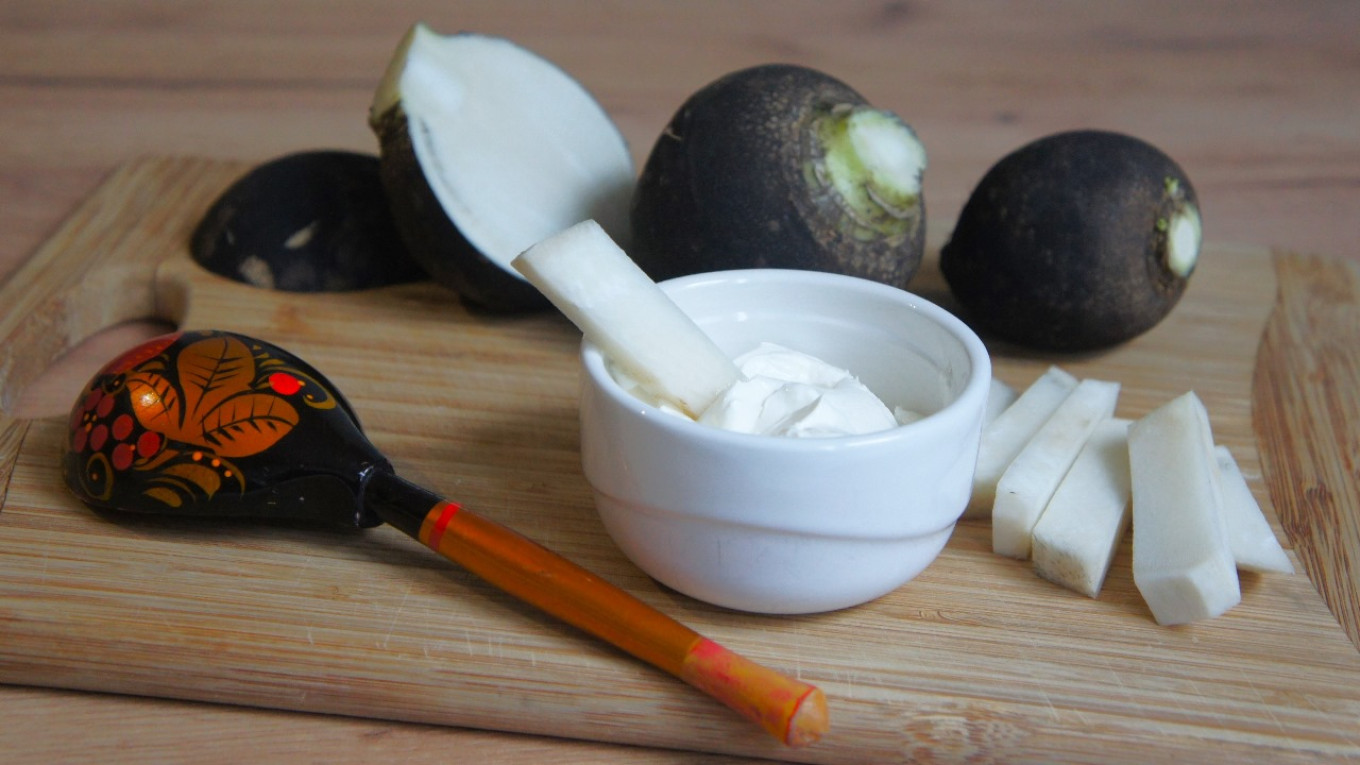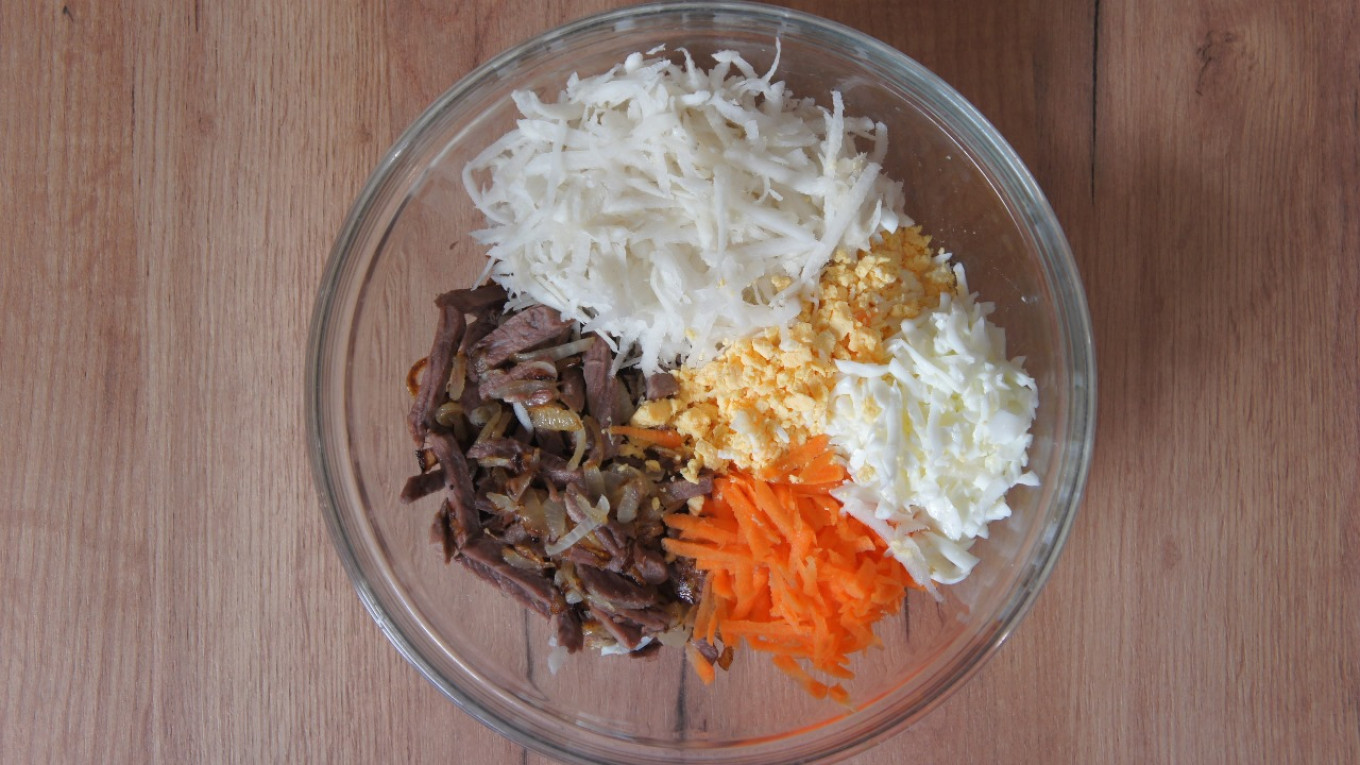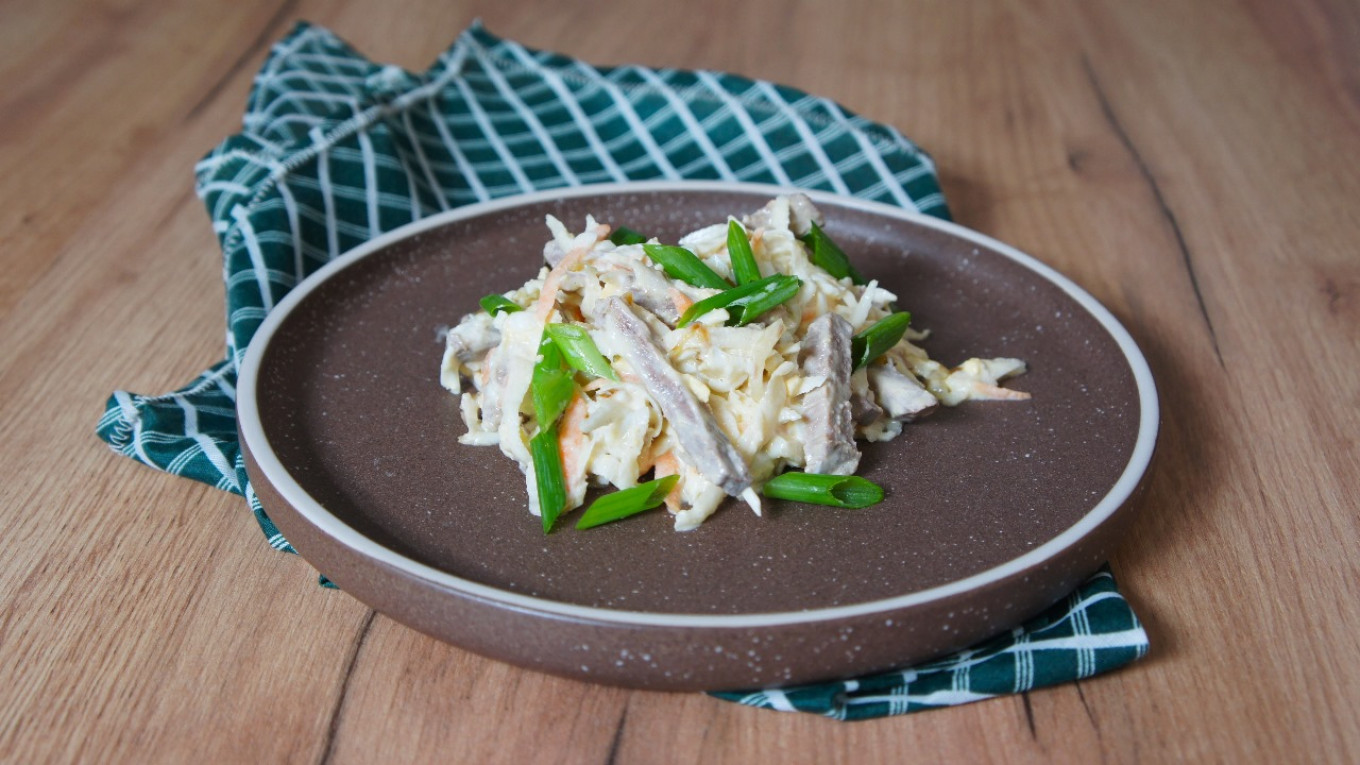“Greetings, Katerinushka, my dearest beloved. I’m sending you a local radish and a bottle of Hungarian.” In January 1720 Peter I sent his beloved wife Ekaterina not only a bottle of precious wine but also… an ordinary radish. The sovereign loved this humble vegetable — and with good reason.
There is an old Russian saying: “horseradish is no sweeter than a radish.” Foreigners learn that it means that one thing is not better than another, but it sounds very odd. It makes perfect sense to Russians. Both root vegetables — horseradish and black radish — have always been on the Russian table together. And both of them are very hot, spicy, and have the same mouthfeel. Today that seems strange, since now most people only know the milder red, white and green radishes, which are much sweeter than horseradish and black radish.
Black radishes are part of Russian culinary history, even if now they are sometimes sold as black Spanish radishes. The skin is thick, rough, black or dark brown. But inside the flesh is snow-white, fibrous, crisp and juicy. The flavor is a little earthy, distinctly bitter and sharp. It really does remind you of horseradish.
Black radishes have a very distinct scent, and when we catch a whiff of it, we are reminded of our distant childhoods. Throughout the fall and winter, thin slices of black radishes were often served on the table.

It wasn’t that we loved black radishes so much. Unconsciously we were trying to enrich our diet with a source of vitamins. Black radishes have much more vitamin C than their milder relatives, and they provide potassium, iron and magnesium, too. The useful qualities of this root vegetable were known in ancient Egypt, and the Greek historian Herodotus wrote about the healing properties of black radish.
If only it didn’t smell so strongly! Because of that smell this dish isn’t served in restaurants today, and it is even hard to serve to guests at home. But that’s now. A century or two ago the black radish was an exquisite culinary treat. How was it served then?
The simplest and fastest way to prepare it is to grate it. First the radishes are grated on a coarse grater, then grated carrots are added along with salt and a dressing of moderately tart, high-fat sour cream.
A completely forgotten traditional Russian sweet is Mazyunya: dried radish in molasses (thin, clarified honey). To make it, first radishes were cut into small slices, stuck on skewers and dried in the sun or a warm oven. When the radishes were completely dried they was pounded in a mortar to the consistency of flour. Then boiled liquid honey was poured into the radish flour, sometimes with spices such as pepper, nutmeg, nutmeg, cloves, and ginger.

A very popular soup in the 19th century was called shchuchina – pike soup. First the fish would be boiled, cooled and the flesh taken off the bones. Then cucumbers and scallions would be finely chopped along with diced dill and parsley. Then — the surprise ingredient — a bit of black radish would be finely grated on top. This mixture was salted and often seasoned with mustard. The jellied broth — aspic — was mixed with a bit of sour broth (a bit like bubbly kvass) or kvass itself and poured over the diced vegetable mixture. The fish was served in this soup or separately.
But by the end of the 19th century, the smell began to bother diners. As a famous Russian culinary expert of that era, Fyodor Zest, wrote, “As for the radish, it should not be prepared ahead of time but grated just before serving the pike soup, since radishes grated earlier acquire a strong odor.”
Maybe the smell is the reason why this soup was forgotten. Chefs fought for this dish. They grated the radish at the very last minute or used horseradish instead; after all, it’s no sweeter than a radish. But tastes changed and diners could no longer stand the smell.
All these once beloved dishes are no longer served at our table, but a few interesting dishes remain. For example, radish dumplings are still made in the Perm region. And in the 1970s, the radish unexpectedly returned again in an elegant dish called the Bishop’s Salad, which was the dream of any tourist who went to Suzdal in the late Soviet period.

Despite the name, this dish is a legacy of the Soviet Union. More precisely, it is a stylized version of old cuisine, created especially for local restaurants in the “Golden Ring” project — old Russian towns encircling Moscow that the Soviet government was turning into a tourist route. The name of the dish was apparently inspired by the Bishops’ Chambers of the Suzdal Kremlin.
It’s interested that this dish was called the Bishop’s Salad in Suzdal, while a similar dish served in Vladimir was called the Klyazma Salad. Apparently the tourist board wanted a variety of names.
Of course, there was no mayonnaise served in the ancient cuisine of Suzdal! Today all these attempts to reconstruct ancient dishes seem bit pathetic, since they weren’t based on real culinary history but perceptions of that history developed through Soviet propaganda. In the Soviet version of ancient history, the common people had endless wisdom and preferred unpretentious and cheap dishes, such as simple crepes, pickles and thin soups. Conveniently these “ancient dishes” were in keeping with the food shortages in the USSR at the time, and so in the opinion of the Communist Party they demonstrated a profound class consciousness and reflected the tastes of the common people.
The presence of meat in a dish naturally placed it in the category of “elite.” What were the elite dishes in medieval Russia called? Of course, they were “royal,” “boyar,” “monastery,” or “bishop’s” dishes. All these epithets instantly made our compatriots’ mouths water in the mid-1970s, a time when they were not spoiled by many delicacies. This is the origin of all those “tsar’s crepes,” “boyar-style meat,” “monastery fish” and “bishop’s salad.”
Despite all this, the salad à la bishop is still delicious, especially if you replace store-bought mayonnaise with homemade. And if you are still wary of the black Spanish radish, you can use a green daikon radish instead.
Bishop’s Salad
Ingredients
- 2 black Spanish radishes
- 200 g (7 oz) boiled beef
- 2 boiled eggs
- 2 onions
- 1 carrot
- Sunflower oil (for frying)
- 150 g (3/4 c or 5.3 oz) mayonnaise
- Salt and pepper to taste

Instructions
- Finely chop the onion and sauté in oil.
- Mix with chopped beef.
- Grate radish, eggs (separate white and yolk before grating) and carrots on a coarse grater.
- Mix everything gently, salt and pepper.
- Decorate with half of a cooked egg white and marinated berries, if you wish.






